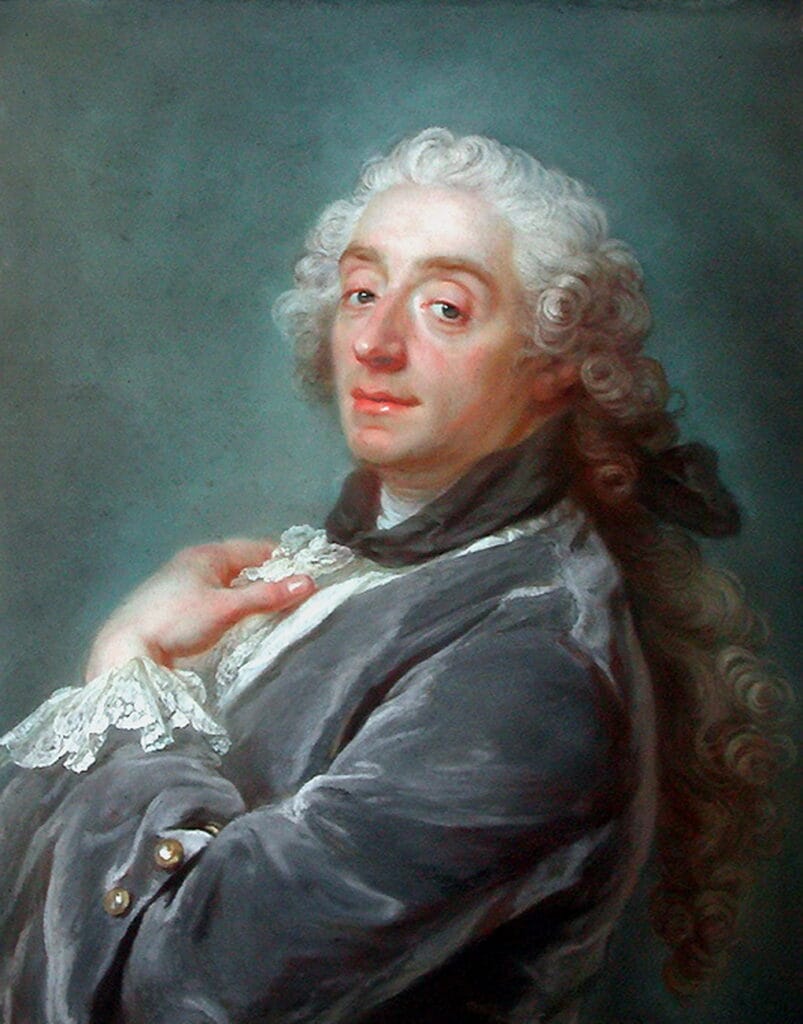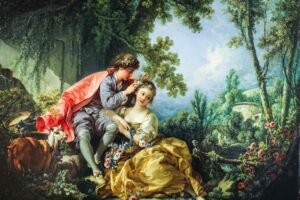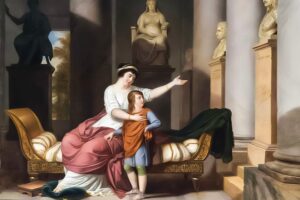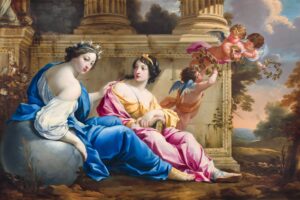A Peaceful Daydream: François Boucher’s “Pastoral Scene”
Imagine stepping into a gentle world where time slows down, worries disappear, and all that surrounds you is sunshine, soft grass, and quiet joy. That’s the feeling you get when looking at Pastoral Scene, a painting by the French artist François Boucher, created around 1730.
Boucher painted in a Rococo style, which was known for being light, graceful, and full of charm. Instead of showing serious events or battles, Rococo paintings often focused on beauty, love, nature, and peaceful, playful moments.
What’s a Pastoral Scene?
The word “pastoral” simply means “about the countryside.” Artists used this word to describe dreamy scenes of country life — gentle hills, soft meadows, animals like sheep and goats, and people enjoying the outdoors. It wasn’t about real farm life, but rather an idealized version: calm, pretty, and full of harmony.
A Moment of Friendship and Joy
In the heart of this painting, we see three young women enjoying a quiet afternoon together.
One sits gracefully on the ground, wearing a flowing white and blue dress. She holds a bouquet of flowers and looks up warmly at her companion. Beside her, another woman in yellow leans gently toward her, with flowers tucked into her hair and a soft blue ribbon at her side.
Kneeling in front of them is a third figure, dressed in a rustic brown coat and soft red skirt. She offers a flower to the woman in white. The exchange feels kind, tender — maybe playful or even affectionate. All three seem connected by a moment of closeness and calm.
Nature All Around
Around them, a small group of sheep and goats relax. One sheep even seems to glance out at us, as if inviting us into this serene scene. Nearby, a straw hat and ribbon have been set down in the grass, adding to the feeling of leisure and comfort.
Behind the women, an old stone fountain stands, covered in vines. It feels like part of the forest — ancient and quiet. In the far distance, a village or castle rests under the soft light of the sky, which is painted in dreamy blues and gentle clouds.
The Feeling Behind the Painting
Pastoral Scene doesn’t tell a dramatic story. It invites us into a gentle moment — full of friendship, beauty, and peace. It’s about enjoying nature, resting with loved ones, and finding joy in simple things.
Through soft colors, flowing lines, and calm faces, Boucher gives us a picture of a perfect day — a day to slow down, breathe deeply, and just be.
About Artist

François Boucher (1703–1770) was a French painter, a dominant figure of the Rococo art movement. He was the most celebrated artist of his time, serving as the official court painter to King Louis XV and working closely with the king’s chief mistress and art patron, Madame de Pompadour. His style is the very essence of Rococo: playful, sensuous, and highly decorative, focusing on mythological, allegorical, and pastoral scenes.
Artistic Style and Legacy
Boucher’s style is characterized by its lighthearted and charming nature, a direct contrast to the more somber and dramatic tones of the Baroque. His paintings are known for:
- Sinuous Lines and Curves: He preferred soft, flowing lines over the rigid geometry of earlier art.
- Pastel Color Palette: He used a delicate range of light blues, pinks, yellows, and greens.
- Playful Subject Matter: He often depicted scenes of love, mythology, and idyllic country life, often with a hint of eroticism.
Boucher’s artistic influence was immense. He was a master of many mediums, including tapestry design, and his work perfectly captured the refined tastes and luxurious lifestyle of the French aristocracy before the Revolution.
Notable Artwork
- La Toilette (c. 1742): A prime example of his intimate genre scenes, it depicts a woman at her dressing table, a subject that was popular in Rococo art.
- The Mysterious Basket (c. 1748): This is a work with a playful, ambiguous title, characteristic of his whimsical style.
- The Fountain of Love (c. 1748): A mythological and allegorical scene celebrating love, a classic Rococo subject.
- The Bird Catchers (c. 1748): Part of a series of idyllic pastoral scenes, this work exemplifies his charming depictions of country life.
- Spring (1755) from a series titled “The Four Seasons”: This work was created as part of a decorative set for Madame de Pompadour.
- Pastoral Scene (c. 1735): Boucher painted many similar scenes of shepherds and shepherdesses in idyllic settings, a cornerstone of his work.
- Madame de Pompadour (1756): One of his most famous portraits. It shows his patron in an opulent, relaxed setting, surrounded by objects that reflect her intellect and status.
- Les Sabots (c. 1768): Also known as “The Clogs,” this is another pastoral scene, showing a country girl in an idealized setting.
- A Lady on Her Day Bed (1743): This intimate portrait shows a woman in a relaxed, private moment, a popular theme in Rococo art that celebrated luxury and leisure.



